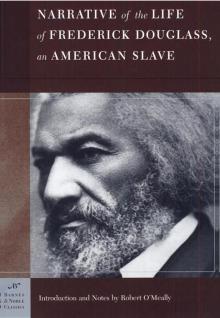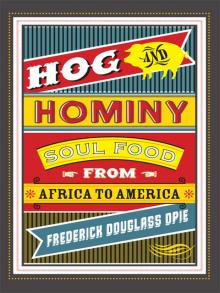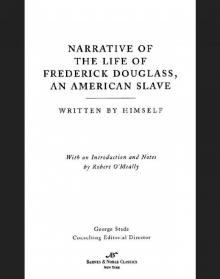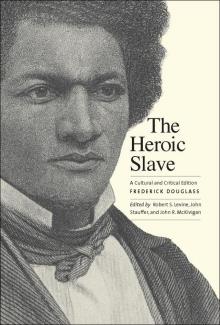- Home
- Frederick Douglass
Hog and Hominy: Soul Food From Africa to America Page 8
Hog and Hominy: Soul Food From Africa to America Read online
Page 8
Middle- and upper-class African Americans did share some eating traditions with poorer southern African Americans. For example, cooking chicken, some form of corn, and one-pot meals was common to African Americans of every status. In the 1880s, the family of middle-class African American James Weldon Johnson preferred eating “soul-satisfying” dishes such as gumbo, fried chicken, and hominy. Sausage and hominy or hog and hominy was a popular breakfast. Gumbo and rice was an equally popular soul-satisfying dish. Johnson recalled the unforgettable experience of eating some gumbo made by a Charleston, South Carolina, migrant named Mrs. Gibbs. She made her Charlestonian gumbo in a large pot similar to those used in the old slave quarters. In it she put okra, water, salt and pepper, “bits of chicken, ham first fried then cut into small squares; whole shrimps; crab meat, some of it left in pieces of the shell; onions and tomatoes; thyme and other savory herbs.” Then she slow cooked it for hours and served the gumbo over white rice.67
Johnson grew up living with his father, who was from Richmond, Virginia, and his mother and maternal grandmother, both natives of the Bahamas. “My grandmother was especially skillful in the preparation of West Indian dishes: piquant fish dishes, chicken pilau, shrimp pilau, crab stew, crab and okra gumbo, hoppin’ John, and Johnny cake.” Soups and stews remained important staples in many parts of the South because of their ability to feed several mouths with a small amount of meat or fish. While Johnson describes his grandmother’s cooking as West Indian, descendants of slaves in the United States, Cuba, and Brazil prepared similar dishes with African ingredients like okra.68
In addition to rice, poor folk throughout history have also had an enduring relationship with fried fish. When fat or oil is heated to the high temperatures necessary for frying, its chemical composition changes, and the body’s enzymes have trouble breaking it down. As a result, the body must work harder and longer to gain any benefit from a dish such as fried fish. As we now know, Africans along the Senegal, Gambia, Niger, and Congo rivers received a sizable percentage of their protein in the form of smoked, salted, and fried fish. This tradition continued in South Carolina and Virginia into the twentieth century. African Americans living near bodies of water ate lots of fish, both fresh and canned. After the turn of the century, canned salmon was so cheap that southerners purchased it to make salmon cakes or to eat plain. Similarly, they purchased canned oysters and sardines and ate them with crackers. Yet fried catfish and porgies remained the most popular fish preparation by far. “Southerners believed that God made fish to be fried,” writes one historian of the South.69
After the Civil War, the consumption of fresh fruits and vegetables decreased as owners of large plantations were no longer required to grow them for slave rations. The orchard, across the South, insists one historian, “almost disappeared from the commercial plantation and was confined to the land of the provident yeoman farmer. As the twentieth century wore on, those who grew fruit found fighting insects and fungus a difficult and expensive proposition.”70 Commercially producing fruit orchards may have disappeared, but many African American families in the South continued to cultivate gardens that supplied their tables with fresh peaches, berries, and grapes. For farmers who dedicated land to subsistence farming, like those around the Tuskegee and Hampton institutes, there were thus healthy aspects to the southern African American diet. As I shall discuss, the tradition of subsistence gardening went with African American southerners when they migrated north to states like New York.
SPECIAL OCCASIONS: LATE-NINETEENTH-CENTURY REVIVALS
After settling the question with his bacon and cabbage, the next dearest thing to a colored man, in the South, is his religion. I call it a “thing,” because they always speak of getting religion as if they were going to market for it.
—WILLIAM WELLS BROWN—
“Black Religion in the Post-Reconstruction South” (1880)
Religious traditions and eating on special occasions became even more established in African American communities after emancipation. There are many different churches within most African American communities, but the food celebrations remain consistent.71 These events increased the association between soul and food in black communities: religion nourished the soul while food nourished the body. African Americans at the turn of the twentieth century were largely an agricultural group made up of hardworking farmers and farmhands. Working off a heavy Sunday breakfast or dinner on the grounds during a revival or on Christmas or New Year’s Day was much easier for them than for their descendants in the industrial society of the late twentieth century.72
In 1895 and 1896 African American farmers in the vicinity of Tuskegee, Alabama, generally worked “about seven and a half months during the year,” according to researchers from the U.S. Department of Agriculture. “The rest of the time,” says one researcher, “is devoted to visiting, social life, revivals, [and] other religious exercises.” During the “laying-by time,” while the crops were maturing, African American farmers near Tuskegee held “bush meetings” and revivals and visited friends for sometimes a whole week at a time.73 Writing in 1903, W. E. B. Dubois insisted that, at the turn of the century, the church represented “the social centre” of African-American life: “This building is the central club-house of a community of a thousand or more Negroes. Various organizations meet here—the church proper, the Sunday-school, two or three insurance societies, women’s societies, secret societies, and mass meetings of various kinds. Entertainments, suppers, and lectures are held besides the five or six regular weekly religious services.”74
Revivals and the centrality of the church in the lives of African Americans continued into the 1920s and 1930s. These were two important decades in American history, during which southern-born African Americans migrated to the North in large numbers. Most migrated in search of better-paying jobs and housing. Others fled to escape oppressive race relations and the jim crow policies that began after the end of Reconstruction.
THE NADIR BEFORE THE GREAT MIGRATION
Historians have called the period before the Great Migration (discussed in the next chapter) the nadir of race relations in the United States. In the late nineteenth century, conditions for black southerners became deplorable as northern politicians began dismantling Reconstruction in 1877, abandoning black southerners. Southern racists in the United States produced an abundance of anti-African-American literature, and bigots among predominately southern white Protestant church leadership declared the virtues of black subordination to whites in all facets of life. For black southerners, it became increasingly more difficulty to exercise their rights as U.S. citizens after northern politicians removed federal troops from the South.75 For example, during his visit to the lower Mississippi region in the 1880s, Austrian writer and traveler Ernest Von Hesse-Wartegg asked, “What are these causes that have set Negroes on the move? Poverty and distress in the South since the war and bad treatment from planters and officials.”76
In 1881 the Weekly Louisianian carried a story on why a group of African Americans had left North Carolina for Indiana. The black North Carolina natives explained that “although nominally free since the war, our condition in the South was in fact one of servitude, and was each year becoming worse.” Economically, their wages were “only sufficient to sustain our lives with the coarsest food, cover our bodies with the poorest raiment, and shelter us in the [most] wretched habitations,” they wrote. Politically and socially, “when the laws were not made to discriminate against us outright, they were so administered as to have the same effect.” Local magistrates in North Carolina used every pretext to “send men of our race to the penitentiary, while white men were unmolested who committed the same offenses. . . . More and more each year we were deprived of our political rights, by fraud if not by violence. There was no security for our lives.”77
Security for African Americans grew worse with the election of President Woodrow Wilson (1913–1921). Wilson demonstrated that he was either unaware or uninterested in conditio
ns facing black southerners by staging the premier for the racist pro–Klu Klux Klan film The Birth of a Nation in the White House. Furthermore, he remained inactive during a number of race riots that happened during his administration, in East St. Louis, Charleston, Houston, Knoxville, Elaine (Arkansas), and Tulsa, in which hundreds of blacks were murdered. Over time African Americans learned that Wilson’s silence in the midst of racist atrocities committed by whites was a deadly combination. It became clear that he was no champion of democracy and justice for all U.S. citizens. Taking their cues from the Wilson administration, officials at the local level around the nation remained apathetic to the complaints of the friends and families of African American victims of lynchings, arson, and beatings committed by both civilians and police officers between 1913 to 1922.78
Black folk were determined to defend their citizenship rights against white racist aggression. The assertiveness of African American veterans of the world war clashed with the determination of racist whites to reestablish the pre-WWI subordination of African Americans. In communities where riots erupted, supporters of the jim crow power structure encountered little restraint from local officials when they mobilized to crush outspoken and armed African Americans. Research on racial conflict across the country during the nadir indicates that southern whites were trying to regain self-confidence by practicing violent white supremacy rituals: beating, raping, shooting, lynching, and torching African Americans and destroying their important social and economic infrastructures.79
In the aftermath of several riots, one black southerner in 1921 concluded that African Americans, “especially the Southern wing of the race is tired of un-Godly principles being meted to us.” He called jim crow an “un-American, unprincipled, and inhuman” system.” He added, “No Colored man is safe here, no matter what his social, political, or financial status in the community. We are looked upon as outcasts, vagabonds, or anything other than an American citizen.”80
THE GREAT MIGRATION
From the Black Belt to the Freedom Belt
When World War I started in Europe in 1914, food prices in the southern United States increased, and a business depression occurred that lasted until the summer of 1915. In addition, the boll weevil’s destruction of black belt cotton crops and the flooding of some sections of the South and beyond led to a shortage of crops in 1916 and low demand for agricultural workers. There was also a “demand for labor in the North and higher wages offered there,” according to a 1919 black migration study commissioned by the U.S. Department of Labor.1
For the first time in their lives, owners of large plantations in states such as Alabama had to tell their tenants they could not advance food to them and advised them to relocate. Food shortages, low wages, and unemployment resulted in the exodus of large numbers of African American wage-earning farmhands, sharecroppers, and tenant farmers, who supplied the lion’s share of unskilled labor in the rural southern United States. In addition to economic factors, political forces also shaped their decision to leave the South.
In small towns and villages in states such as South Carolina, whites roughly handled and corporally punished African American residents. The 1919 Department of Labor migration study reported: “The beating of farm hands on the large plantations in the lower south is so common that many colored people look upon every great plantation as a peon camp: and in sawmills and other public works it is not at all unusual for bosses to knock Negroes around with pieces of lumber or anything else that happens to come handy.” African Americans also regularly faced lynch mobs throughout the rural South. Seldom encountered before or during Reconstruction, incidents of lynching became quite common by 1910. The situation for blacks in urban centers was not much better. In southern cities, white public officials shamefully neglected public services and badly needed infrastructure improvements in African American neighborhoods. Harassing and humiliating to African American southerners, jim crow laws were a constant threat to civil rights, even within educational and recreational facilities.2
Many southern blacks traveled north by rail after receiving letters from friends and family testifying to better conditions and wages in the North. Others learned about the “real advantages of the North”—such as better educational opportunities, higher wages, and better options—through African American–owned-and-operated newspapers published in Chicago, Cleveland, Philadelphia, and New York. These papers kept black southerners aware of jim crow oppression, including lynchings and mob violence. By 1917 almost half a million southerners migrated to the North and Midwest to work in fast-growing basic industries. They created new lives for themselves in Kansas City, Chicago, Philadelphia, New York, and other major cities.3
Writer Langston Hughes, originally from Kansas, migrated to New York City to attend Columbia University, arriving there at the start of the Harlem Renaissance. In the 1920s African American artists such as Hughes, Zora Neal Hurston, Countee Cullen, Claude McKay, Alain Locke, Ethel Waters, Duke Ellington, and others received unprecedented and widespread support and enthusiasm for their work.4 Artists of the Harlem Renaissance reflected a new radical consciousness associated with a “New Negro” movement that championed black culture and the ideology of self-determination.5
Many migrants traveled by rail from the black belt to the “freedom belt,”6 as northern employers desperate for laborers provided free passage. African Americans accustomed to confronting jim crow policies while traveling acquired the habit of packing food for train rides. This allowed them to avoid humiliating treatment at segregated eating establishments that refused black customers or required them to go to a rear window of an eatery with a sign marked “Colored” over it (I discuss this in greater detail in a later chapter). Family and friends packed empty shoe boxes with cold sandwiches and other goodies. James Weldon Johnson remembered taking the train from Jacksonville to Atlanta. He wrote, “In those days no one would think of boarding a train without a lunch, not even for a trip of two or three hours; and no lunch was a real lunch that did not consist of fried chicken, slices of buttered bread, hard-boiled eggs, a little paper of salt and pepper, an orange or two, and a piece of cake.”7 In the 1930s Maya Angelou and her brother traveled on a train without adult supervision from California to Arkansas. “A porter had been charged with our welfare—he got off the train the next day in Arizona—and our tickets were pinned to my brother’s inside coat pocket.” Angelou recalled African American “passengers, who always traveled with loaded lunch boxes, felt sorry for ‘poor little motherless darlings’ and plied us with cold fried chicken and potato salad.”8
Mothers, unaware of how long a trip would take, supplied relocating family members with enough provisions for the trip and more. South Carolinian Liza Bowman, as the story goes, must have spent days preparing for her son’s move from one region to another. She prepared “tons of hoecake biscuits, pan after pan of cornbread, fried rice cakes, pickled vegetables, tomatoes, okra, beets, string beans, squash, and jar after jar of cooked beans.” In addition, she sent along “cured and smoked bacon, slabs of salt pork, hams and jerk beef; she packed sacks of cornmeal, flour, grits, dried beans, and rice,” dried fruit, and herbs.9
Lack of space for gardens in the North altered African American eating habits. In the South, people ate peas and beans of one kind or another two to three times a week. In the North, people ate them only occasionally and then often ate the canned variety because of the limited access to land and because the colder climatic conditions restricted their ability to grow inexpensive garden vegetables. In the North, cooks continued to make corn bread regularly, but for some unknown reason it became distinctly sweeter. Southerners dismissed the sweeter northern interpretation of corn bread as unfit for consumption. Over time, however, the corn bread of newcomers from the South became more northern in style, just like the migrants themselves.
Moving North provided African Americans with the opportunity to cook on more modern stoves than were found in the South. In addition, moving to the North req
uired that the cooks who prepared southern food improvise and make do, which is the historical hallmark of African American cuisine. Except for the handful of wealthy migrants who prospered, most southern migrants continued inventing dishes that stretched and transformed what they could afford to purchase on meager working-class wages. Generally, this meant the continuation of the very unhealthy practice of eating the cheapest cuts of meat, particularly pork; seasoning legumes and vegetables with salt pork; and deep-frying chicken and other food.
Adam Clayton Powell, Jr., son of the pastor of Harlem’s Abyssinian Baptist Church and former member of the U.S. House of Representatives, recalled his childhood days and the food he grew up eating in Harlem in his autobiography. Representative Powell was also a minister and became the pastor of his father’s church. Both of Powell’s parents were southerners. His father was born in 1865 in Franklin County, Virginia, at Martin’s Mill, and his mother was born in 1872 on the campus of Christiansburg Academy, in Christiansburg, Virginia. The mother of the senior Powell was a “Negro-Indian woman named Sally,” and his stepfather was a former slave named Dunn. In Franklin County, Virginia, the family rose to a breakfast of “fried fatback, cornpone cooked in the ashes of the fireplace, and coffee made of rye grains.” In 1875 the family relocated to Coldsburg, West Virginia. After accepting a call to the ministry in 1884, the senior Powell attended seminary in Washington, D.C., and then served as the pastor of several Baptist churches in the Northeast between 1888 and 1908. In 1908 he accepted the job of senior pastor of Abyssinian Baptist Church in Harlem.10

 Narrative of the Life of Frederick Douglass: An American Slave
Narrative of the Life of Frederick Douglass: An American Slave My Bondage and My Freedom
My Bondage and My Freedom Two Slave Rebellions at Sea
Two Slave Rebellions at Sea The Color Line in America
The Color Line in America The Negro Exodus from the Gulf States
The Negro Exodus from the Gulf States Hog and Hominy: Soul Food From Africa to America
Hog and Hominy: Soul Food From Africa to America Narrative of the Life of Frederick Douglass
Narrative of the Life of Frederick Douglass![An Appeal to Congress for Impartial Suffrage [a machine-readable transcription] Read online](http://i1.bookreadfree.com/i/03/23/an_appeal_to_congress_for_impartial_suffrage_a_machine-readable_transcription_preview.jpg) An Appeal to Congress for Impartial Suffrage [a machine-readable transcription]
An Appeal to Congress for Impartial Suffrage [a machine-readable transcription] The Color Line
The Color Line My Bondage and My Freedom (Penguin Classics)
My Bondage and My Freedom (Penguin Classics) The Heroic Slave
The Heroic Slave